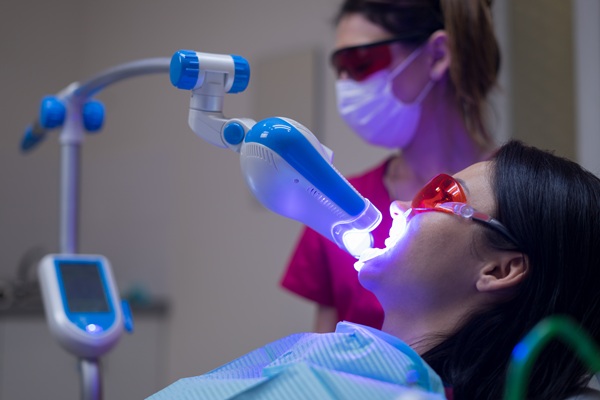A Guide to Denture Rebases, Relines and Repairs

Especially for denture wearers today, seldom do problems arise. With improved materials and custom fits, most people go about their day with no issues at all. However, even well-made dentures can break or experience damage in some way. Instead of panicking, talk to your dentist about rebases, relines or repairs.
What does all that mean?
Basically, when a denture wearer has a problem with breakage, a laboratory has more than one option for fixing them. Whether due to a fracture, normal wear and tear or even a rupture when artificial teeth move around inside the mouth too much, there is a good chance of saving the dentures instead of replacing them. Even something as simple as talking and chewing can eventually cause a set of dentures to break. While frustrating, people need to talk to their dentist.
Understanding the different remedies
Obviously, a broken denture is a big deal. One option is to have them repaired. Keep in mind that the type of break determines whether a laboratory can fix them or not. One example — for a midline fracture, a professional assembles all the broken parts and puts them back together using wax. Other options include stone plaster, plastic sticks and rubber bands. However, if a piece of the denture comes up missing or the break is extensive, the wearer may need to replace the set.
If there is a part missing, a dentist first makes an impression of the patient’s mouth. Next, carved wax helps to recreate the missing part. Then, using various procedures like polishing and packing, all the pieces are fitted back together. If a tooth is missing, the laboratory can make a replacement in the same size, shape and color. In this case, the professional uses wax to secure the new tooth to the base of the denture.
What about rebasing a denture?
For rebasing, the base material of a denture is replaced but without altering any other elements of the device. For instance, for a porous set of artificial teeth, the dental laboratory would use the rebasing procedure. This entails taking an impression of the teeth and removing the base material from the denture. During this time, the teeth remain secure with wax. The lab completes the process by aligning the base with the patient’s teeth and making any final adjustments.
How does the relining process work?
The relining process is used when there is a poor adaptation of the appliance to the tissue in the patient’s mouth. The lab adds a resin material to the denture but without making modifications to the rest of the set. The patient must go without the artificial teeth for at least 48 hours to give the tissue time to rest. Next, the laboratory removes the undercuts on the base of the denture and adds new material to ensure the peripheral extensions are correct. Once polished, the individual can start wearing the dentures.
Do not wait if a problem arises
For the health of your mouth and to continue enjoying wearing your dentures, if something goes wrong, contact your dentist right away. Often, the fix is relatively easy. However, by waiting, you might need to buy an entirely new set. Learn how to care for your dentures to prevent accidents. That way, you can go on smiling, talking and chewing without any problem.
Request an appointment here: https://www.emersondental.com or call Emerson Dental Associates at (201) 620-9998 for an appointment in our Emerson office.
Check out what others are saying about our services on Yelp: Read our Yelp reviews.
Recent Posts
Having a full mouth reconstruction is a highly involved process. Whether you need one due to severe decay or infections, after suffering a dental trauma, or an issue you were born with, this procedure can help restore the full function and appearance of your smile. After a full mouth reconstruction, there are some helpful ways…
Laser dentistry is a modern practice used for a number of dental procedures, ranging from root canals to oral cancer screenings. One of the most common laser dentistry procedures is gum reshaping, which has grown in popularity for both cosmetic and restorative purposes. When gum reshaping is chosen for cosmetic purposes, patients are typically hoping…
Many parents often forget the need to get a kid friendly dentist when choosing a dentist for their children. A kid friendly dentist offers additional benefits that are not available from a regular dentist's office. Some might also get confused when they encounter pediatric dentists and wonder if there is any difference. Pediatric dentists also…
There are benefits to choosing an experienced implant dentist over one who is relatively new in the profession. Dental implants require a more complex process that involves several steps, and choosing the right implant dentist may help make the process more convenient, less invasive, and safer.It is helpful to learn more about dental implants, how…


